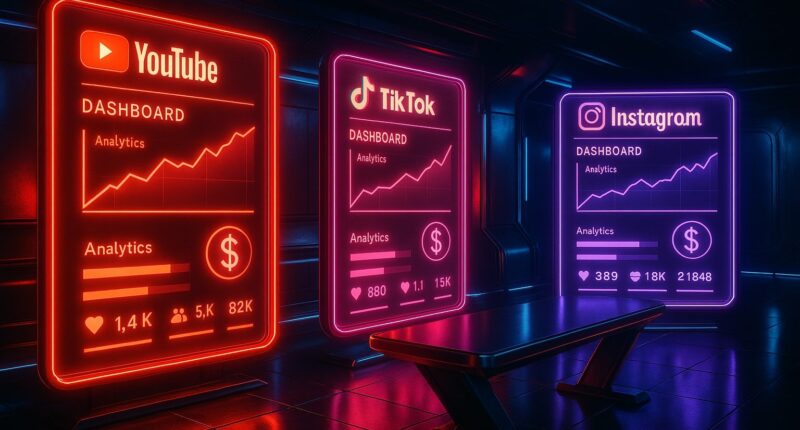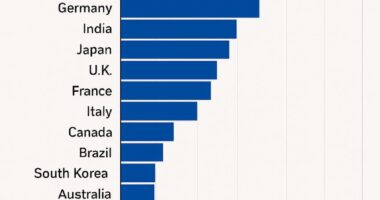The creator economy in 2025 has become a battleground for attention, influence, and income. As content platforms evolve, YouTube, TikTok, and Instagram lead the race—each offering unique monetization paths and revenue potential for creators. But which one truly pays the most? Let’s break down how these platforms stack up in the ultimate 2025 monetization showdown.
YouTube: The Gold Standard of Monetization
YouTube continues to dominate creator earnings through its extensive monetization ecosystem. In 2025, access to the YouTube Partner Program (YPP) requires at least 500 subscribers, 3,000 watch hours, or 3 million Shorts views over 90 days, making it accessible yet demanding for consistent creators. Once qualified, creators earn via ads (AdSense), memberships, Super Chats, Premium revenue sharing, and shopping integrations.
Average YouTube RPM (Revenue per 1,000 views) in 2025 ranges from $1–$5, with niche creators in finance, tech, and productivity reaching $10+ per 1,000 views. YouTube also introduced strengthened content authenticity policies in July 2025 to reward original work and curb mass-produced videos.
Top earning features include:
-
AdSense revenue from long-form and Shorts content.
-
Premium subscriber revenue sharing.
-
Fan-based earnings from Super Thanks, Stickers, and Live Chats.
-
Brand sponsorships and affiliate links integrated with content.
YouTube remains the most stable and predictable monetization platform, especially for creators building long-term careers rather than chasing viral fame.
TikTok: The Era of Long-Form Rewards
TikTok’s evolution into profitability has accelerated thanks to the Creator Rewards Program, replacing the older Creator Fund with a more lucrative structure based on watch time and originality. Longer videos (over one minute) now earn higher payouts, transforming TikTok into more than just a viral entertainment hub.
In 2025, creators can earn through multiple income channels:
-
Creator Rewards Program: $0.40–$1.00 per 1,000 views.
-
Legacy Creator Fund: $0.02–$0.04 per 1,000 views.
-
High-Efficiency Creators (niche, engaged audiences): $2.50–$6.00 per 1,000 views—translating to $2,500–$6,000 per million views.
TikTok’s recent push for longer, narrative-driven videos encourages retention and storytelling. This strategy not only improves viewer engagement but also boosts payouts for creators who maintain high audience watch times. Top-performing verticals on TikTok include lifestyle storytelling, financial advice, and educational tutorials—formats that hold audiences beyond 60 seconds.
However, TikTok’s income remains less consistent than YouTube’s, as it’s heavily algorithm-dependent. Still, the potential for viral reach and short-term income spikes makes it ideal for aspirational creators seeking fast visibility.
Instagram: The Power of Brand and Commerce
Instagram in 2025 continues to prioritize social commerce and brand partnerships over ad-based payouts. The primary monetization strategy centers on audience relationships and product integration, giving creators flexible ways to profit through sponsorships, affiliate marketing, and subscriptions.
Key monetization routes on Instagram include:
-
Sponsored posts and brand collaborations: Creators earn by featuring products and running influencer campaigns.
-
Affiliate links: Customized URLs that track sales from followers.
-
Instagram Shops: Direct product sales with built-in purchase options.
-
Subscriptions and badges: Fans can support creators through live streams or exclusive stories.
-
External monetization funnels: Driving Instagram audiences to external platforms (websites, membership communities, or courses) for additional income.
While Instagram doesn’t usually pay per view, it’s unmatched in brand revenue potential, especially for creators in fashion, wellness, and lifestyle niches. Nearly 40% of creators depend entirely on sponsorships to monetize effectively. Its ecosystem favors influencers who blend product storytelling with aesthetics and authenticity.
YouTube vs TikTok vs Instagram: The 2025 Earnings Comparison
| Platform | Average RPM (2025) | Main Monetization Channels | Best For | Income Stability |
|---|---|---|---|---|
| YouTube | $1–$5 (up to $10+ in top niches) | Ads, memberships, Super Chats, Premium, shopping | Long-term creators, educators, vloggers | High |
| TikTok | $0.02–$6 per 1,000 views | Creator Rewards, live gifts, brand deals | Viral creators, storytellers, trend leaders | Medium |
| Varies by deal (avg. $100–$10,000 per campaign) | Sponsorships, affiliate marketing, commerce | Brand influencers, lifestyle creators | Medium-High |
Monetization Trends for 2025 and Beyond
Across all platforms, three key trends define the 2025 landscape:
-
Authenticity and originality drive payouts. YouTube and TikTok now reward creators with longer watch times and original formats.
-
Commerce and community overviews dominate Instagram. Direct-to-consumer content remains its golden ticket.
-
Diversification is vital. The most successful creators build across multiple platforms, blending YouTube’s steady ad income with TikTok’s virality and Instagram’s brand revenue.
Conclusion: The Ultimate Winner in 2025
When it comes to consistent revenue, YouTube still reigns supreme. TikTok, though less stable, offers excellent potential for viral monetization through its Creator Rewards. Instagram remains a powerhouse for brand-driven creators who excel at storytelling and commerce.
The winning strategy in 2025 isn’t choosing one platform—it’s integrating all three. A YouTube backbone for passive revenue, TikTok for viral reach, and Instagram for brand partnerships form the trifecta of the modern creator empire.









